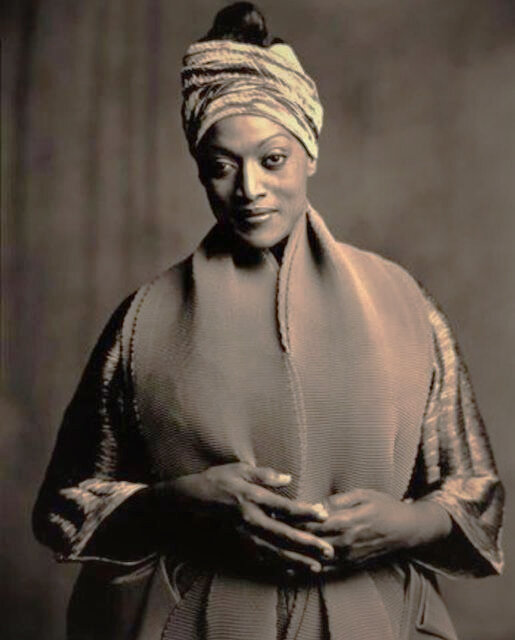Ginger Smock
The Pioneering Jazz Violinist and Bandleader
Ginger and Her Violin, 1954 Photograph by Robert S. Scurlock.
Known for delivering blues-infused violin solos that carried harmonic structures akin to the horn, violinist Ginger Smock paved the way for other talented female musicians in a male-dominated industry. The jazz scene that developed in Los Angeles was shaped in part by Ginger’s contribution, as she was an important trailblazer during the 1940s and ’50s.
Emma Smock—nicknamed “Ginger”—was born in Chicago on June 4, 1920. With the untimely death of her parents, Ginger was orphaned at age six and sent to live with her aunt and uncle in a black community located on Central Avenue in Los Angeles, California. In the 1930s, Central Avenue became a thriving music scene for blacks, and it attracted big names like Nat “King” Cole, Duke Ellington, and Louis Armstrong. Ginger was adopted by her aunt and uncle, and they soon realized her nascent musical talent. Central Avenue families at the time had suffered the ill effects of racial discrimination, which barred them from certain career paths. This caused many of them to secure private music lessons for their children as a way of laying a foundation for success in the future.
To that end, Ginger’s adoptive parents purchased a violin for her and eventually arranged for private studies with Bessie Dones, who taught her classical violin around the age of eight. Ginger proved to be a prodigy. A rare performance she gave at the Hollywood Bowl at age ten resulted in a standing ovation. While she attended Jefferson High School, she joined the school orchestra and even became a drum majorette on the marching band, which was led by celebrated black music teacher Sam Browne.
“Ginger proved to be a prodigy, proof of which resides in a rare performance she gave at the Hollywood Bowl at age ten, which resulted in a standing ovation.”
Ginger Smock’s violin, said to have been the work of Ferdinand August Homolka, was created in 1849 in Prague, Czech Republic. Courtesy of the National Museum of African American History and Culture.
Ginger became such an accomplished violinist that she later figured prominently in two musical organizations, the Los Angeles Junior Philharmonic—which was composed primarily of whites, apart from her—and the All-City Student Symphony. Ginger became interested in jazz music when she heard it on the phonograph and radio as a little girl, from the likes of jazz violinists Eddie South, Joe Venuti, and Stéphane Grappelli.
Many of the star players she grew up listening to she later met, including Stuff Smith, who launched her jazz career when she was called to substitute for him at a jazz club in 1943. That same year Ginger, who formed a female trio called the Sepia Tones with Mata Roy and Nina Russell, played jazz around Southern California. And after World War II, Ginger rose to prominence in Los Angeles.
She began playing classy venues like the Cocoanut Grove in Santa Monica. And she enjoyed an extended stint at the Waikiki Inn, where she performed with her band in Hawaiian outfits. A November 15, 1947 edition of the Cleveland Call and Post reports that, following a stunning performance at a nightclub on Central Avenue called the Last Word, four clubs in San Francisco started a bidding war to secure her services. Ginger was soon tapped to record on composer Leonard Geoffrey Feather’s album Girls in Jazz, which was the first record to chronicle the work of female jazz musicians.¹ Ginger also landed a job as a radio show host for Melody Parade.
A 1944 photo of the Sepia Tones. Courtesy of Ivy G. and Dean Tatam Reeves.
Her television debut came in 1951 when Ginger and the Sepia Tones hosted a thirty-minute TV show that aired on CBS affiliate KTSL for six weeks. She also went on to host a live television show of her own in 1957 called Rhythm Review. Other recordings followed, and Ginger moved on to other gigs, including a four-year stint on a cruise ship that saw her leading a quartet. This too led to a recording, the LP titled, On the S.S. Catalina with the Shipmates and Ginger. As time passed, the discrimination Ginger faced as both a black person and a woman led to fewer opportunities, with many of her jazz recordings unreleased to the public. She spent the rest of her music career in the virtual shadows, playing concertmaster for orchestras in Los Angeles and, later, Las Vegas, where her venues were The Flamingo, The Sands, Ceaser’s Palace, and The Tropicana.
While the City of Los Angeles recognized her cultural contributions with an award before she moved to Las Vegas, Ginger pursued the best opportunity available to her in the desert, where she enjoyed life with her husband. Toward the end of her life, she played little to no jazz but returned to playing church music each week at Trinity Temple in Las Vegas. Ginger died on January 1, 1995, at age 74.
You may also be interested in:

This article appears in 45 People, Places, and Events in Black History You Should Know.
Available from Amazon.com, BN.com, and other retailers.





Sheku Kanneh-Mason is a young British cellist who was the first black person to win BBC Young Musician of the Year in 2016. He also became the first cellist to chart in the UK in the Top 10.